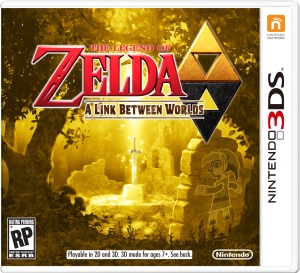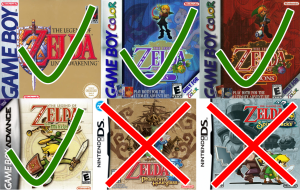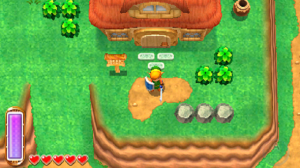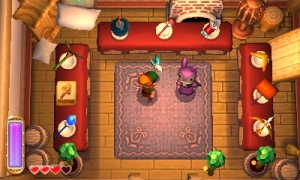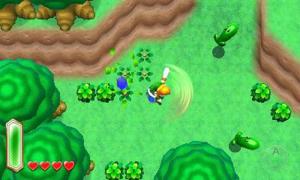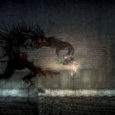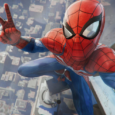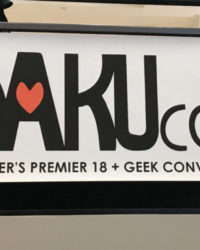At one time, you couldn’t get a better handheld series port than Zelda. Link’s Awakening, the Oracle games, and Minish Cap were masterpieces in their own right, distinctly different from their console brethren, but equally as challenging and entertaining.
Then the DS came along and screwed it all up for everyone.
Phantom Hourglass is the second worst handheld Zelda ever created. Though it had the visual charm of Wind Waker, it captured none of the exploration and adventure, instead replacing a vast world with a central dungeon which needed to be beaten nigh-endlessly to get to its ending. This frustrating repetition on top of a less than stellar game made for an experience I care to not repeat. The only game worse than this was its successor Spirit Tracks, which decided if it made us go on set paths to get to areas to explore, it would somehow be better than a free roaming boat. Though the central dungeon idea was improved by removing its time limit and allowing you to skip previously played parts, the developers stuck to their guns of extending gameplay time at the expense of monotony. Bleh. The age of handheld Zelda darkness was upon us.
But hark, like the sun peering through a dark cloud break, a new game was announced. One that featured top-down adventuring ala the previous handhelds and was a sequel to one of my personal favorites, A Link To The Past. A Link Between Worlds promised to take us back to a familiar Hyrule and bring the series back to its roots. As wary as I was, I bought it on the hopes that just maybe the developers realized that exploration is a crucial part of gameplay and it’s a bad idea to have half your game consist of playing the same level ad nauseam. I popped it in the 3DS and braced myself for disappointment.
I’ve never been so happy to have my fears unfounded.
Okay maybe I have, but you get the picture.
Link to the Past Nostalgia, But Better
First off, just to hear the classic Link to the Past tune to start off the game brought a stupid grin to my face. And it didn’t stop as I started the game. This version of Link is the blacksmith’s apprentice, which makes you wonder how far it is in the future if the fame and deeds of his ancestor didn’t keep him from working, but I digress. You start off in the same house from Link to the Past, you have an almost identical world map to Link to the Past, and all the music is revamped versions of, you guessed it, Link to the Past. This game just screams nostalgia in the absolute best way possible.
Another feature that struck me almost immediately was the smoothness of gameplay. Not only do you have full range of motion instead of just 8, you can break pots with your sword, and the complete pause of gameplay when going upstairs has been removed. The sword swings also seem to be faster and produce such a crisp sound and fast effect, it feels noticeably quicker and more satisfying to cut down a bush. I know that sounds stupid, but when you try it you’ll know and be like “Man, AristoGamer, you were right.” And I’ll pull down my aviators while I power up my helicopter to fly over the ocean and say “I know, kid.”
The story is also quite interesting. An evil entity named Yuga is turning sages into paintings and it’s up to Link, who suddenly gets the power to merge into walls, to foil his plot and save Hyrule and another place whose name is too hilarious to spoil. The second half of the game (there’s always a second half to a Zelda game) features a compelling plotline and one of the best endings to a handheld Zelda game in some time.
Breaking New Ground By Reexamining Old Ground
For the first time in franchise history, you can complete the dungeons in any order you want! When I first heard that, my mind was blown. “A non-linear Zelda should not be possible”, my psyche screamed. It was quickly silenced by the logical addition of Ravio, an item salesman who runs a store out of your house to rent you weapons. That’s right, from the beginning of the game you can rent every single quest-critical item for a price. The only catch is when you die, the items get returned and you must pay for them again. You also don’t need to worry about ammo or magic for specific items, as their use takes away from one unified bar that refills. Though it doesn’t make much sense for arrows to use the same system as the fire rod, it’s much simpler and more streamlined. I definitely don’t miss running out of ammo halfway through a dungeon and having to scrounge for more. This novel system singlehandedly loosened up a series which didn’t need loosening, but benefited from it greatly. The resulting game is radically fun, figuring out what items you need and want for each place and placing emphasis on gaining rupees.
That’s another cool thing, not only do start with a rupee limit of 9999, but because they’re so important, you find yourself caring about getting them far more. Gone was the exasperating feeling of needing to purchase something—anything—to lighten your coin purse. With this system, I don’t think I ever had over 4000 rupees. It seems so simple to place more importance on something so ubiquitous between games, but it’s a smart choice that made even cutting down bushes more rewarding.
In fact, the only negative thing I have to say about this game is I don’t really like the way Link looks from the top down view. Look at his front coif and tell me they couldn’t scale that back just a smidge so we could better see his face. Just compare Link to the Past and Link Between Worlds and tell me one doesn’t look more limiting.
Also, the art style reminds me of what they did with the new Donkey Kong, Kirby, and Mario Brothers games—they all look kind of similar and shiny. Though it’s not as pronounced a problem in this title and it harkens back to Link to the Past, it still has that same plasticky feel that the New Super Mario Brothers has where I feel like Nintendo got a bit lazy on the art. But again, it’s not nearly as noticeable in Link Between Worlds as it is in the aforementioned series.
Verdict:
Even if you’re not a Zelda fan or just haven’t played Link to the Past, A Link Between Worlds is an excellent game that has one of the smoothest engines, best soundtracks, and most creative dungeons of the series. The nonlinearity of the game allows the player more freedom while smart design choices remove the small annoyances and increase fun just running around. If you have a 3DS and like Zelda games or adventure titles, this should absolutely be the next game you buy.


